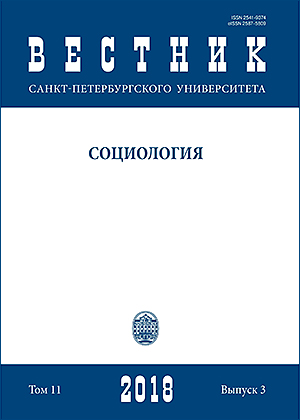Pain perception in professional identity of young doctors
DOI:
https://doi.org/10.21638/spbu12.2018.307Abstract
The article considers the process of marking a professional identity by young physicians in the context of the perception of categories “disease” and “pain”. The aim of the research is to analyze how the formation of professional identity is developing in young physicians in the context of a different attitude to categories “disease” and “pain”. The empirical basis of the research: biographical interviews with young physicians of medical specialties from St. Petersburg (n = 20). For young physicians of medical specialties, the distinctive feature of perception of categories «pain» is the dichotomy “professionalism — compassion”, which is expressed in the fact that «pain», on the one hand, is considered exclusively from professional contexts, but on the other hand — the desire to help the patient is also present within the professional practices of young physicians. Professional identity in the context of perception of the disease and pain is marked by young physicians based on various contexts of the attitude to this category. In the research, we define the category «pain» as an increased and metaphysical category. In this study, we have identified three key categories of pain (attitude to pain) in young physicians. Also, the highlighted categories “pain” and “disease” (relations to them) among young physicians indicate that depending on how the perception of pain occurs, what the determinative attitude towards pain is, such will eventually be the professional identity of the young physician and its marking in daily life. In this case, unlike the traditional perception of pain by physicians, where this category is inscribed in the definition of fleshliness and attitude towards the fleshliness of the patient, the disease is a metaphysical category, as observed above, and the attitude towards this category is built on the basis of various factors and components. The results of this author’s study were the identification of types of professional identity of young doctors and scenarios of pain perception.
Keywords:
professional identity, young doctors, pain perception, types of the identity of young doctors, young doctors of medical specialties
Downloads
References
References
Downloads
Published
How to Cite
Issue
Section
License
Articles of "Vestnik of Saint Petersburg University. Sociology" are open access distributed under the terms of the License Agreement with Saint Petersburg State University, which permits to the authors unrestricted distribution and self-archiving free of charge.




